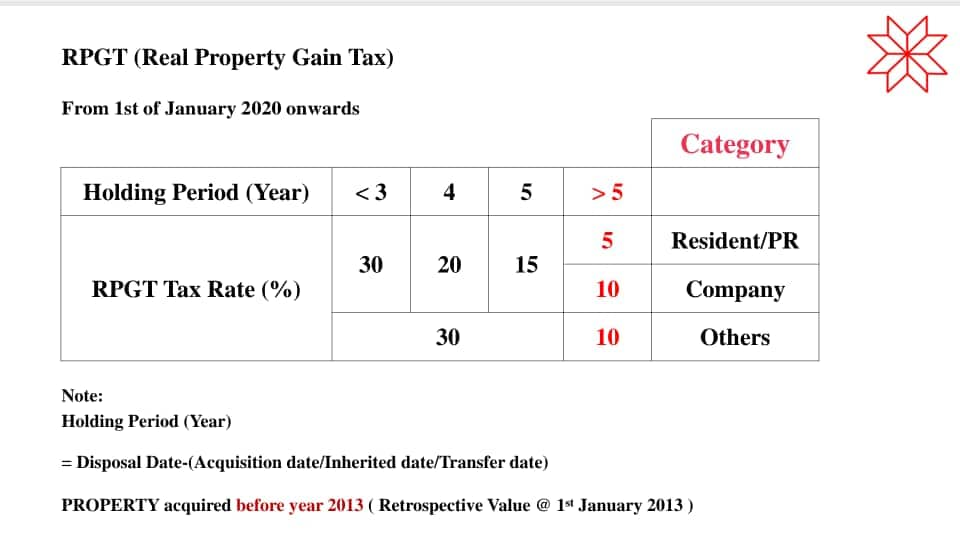Written by Sr KC Law
Have you encountered strata property developments in Malaysia that have been abandoned and wondered what happened and what could have been done to salvage it?
In this article, we want to look at the role of the Joint Management Body (JMB)/ Management Corporation (MC) and the function of the Strata Management Tribunal in ensuring effective strata property management.
In Malaysia, urbanization, scarcity of land, and an increase in land prices will inevitably cause more and more of the Malaysian population to live in strata residential properties.
A quick look at the statistics from the Department of Statistics Malaysia shows that in the second quarter of 2019, there were a total of 5,727,814 residential properties in Malaysia (both strata and non-strata). Out of this total, 1,709,987 are residential strata properties, representing about 30% of the total residential properties. We can further breakdown the number of strata residential properties into three types as shown below:
- Apartments / Condominiums – 904,948 units
- Flats – 331,356 units
- Low-cost flats – 473,683 units
83.91% of these residential strata property or 1,434,797 out of 1,709,987 residential strata units are situated in the following four states.
- Selangor – 658,978 units
- WP Kuala Lumpur – 377,120 units
- Pulau Pinang – 262,877 units
- Johor – 135,822 units
By the end of 2020, the total number of residential properties has increased to 5,845,850 units. The breakdown for 2020 is not available (possibly due to the COVID-19 pandemic). However, it should follow that the number of strata residential properties would increase in direct proportion.
The Ministry of Housing and Local Government (Kementerian Perumahan dan Kerajaan Tempatan [KPKT]) published some statistics on the number of cases filed and resolved at the Strata Management Tribunal (SMT) from 2016-2019, after the introduction of SMT 2015 on 1 June 2015 as shown in Table 1.
| Year | No. of cases filed | No. of cases resolved | Percentage (%) |
|---|---|---|---|
| 2016 | 2,642 | 2,604 | 98.6 |
| 2017 | 4,390 | 3,879 | 88.4 |
| 2018 | 4,964 | 4,584 | 92.3 |
| 2019 | 5,675 | 4,456 | 78.5* |
*Within 150 days
The above trend shows us that there is an increase in SMT cases filed at KPKT for resolution from 2016 to 2019. (We previously wrote about Strata Condominium Disputes and How to Make a Claim at the Tribunal in Malaysia)
In the year 2019, out of the total cases filed, 93.23% were concerning non-payment of maintenance and sinking funds. This tells us that many JMB/MC have difficulty in collecting arrear maintenance and sinking funds from strata unit owners.
This poses the question, why are these owners not paying their maintenance and sinking funds? The onus is on the JMB/MC as property managers to identify the root cause(s) and address them in a timely manner.
To appreciate the crucial role of the JMB/MC in such situations, let’s take a look at a property management case study of an apartment, close to being abandoned and how it was turned around, by a newly installed JMB committee. They had managed to increase the collection of arrear maintenance charges and sinking funds, improve the management of common property and improve the value of the property.
Case Study
“Apartment M” (not its real name), has 23 blocks of 5-storey walk-up strata property with 20 units each or a total of 460 units in Malaysia. In January 2020, a newly elected JMB committee “inherited” all the problems listed in Table 2 below.
The first task undertaken by the committee was to conduct an internal audit of the JMB account for the last 5 years / 60 months within 14 days of assuming their duty.
They sought to identify the apartment’s sources of income and expenses for the last 60 months. They were quick to point out various ‘leakages’ / wastages in the financials and took measures to cut them immediately.
They also found that only 18% of the owners regularly pay their maintenance and sinking fund. The JMB committee knew that the poor upkeep of the apartment could have been one of the main reasons for the owners’ reluctance in paying their monthly maintenance charges. The owners may have felt that the maintenance charges are not commensurate to the poor and unsatisfactory maintenance services rendered.
Thus, they had to prioritize efforts and corrective actions that were visible and apparent to demonstrate that there was a significant improvement in the condition of the apartment to encourage defaulters to pay up their arrear maintenance charges from the last 5 years. These were:
- restoring common lighting of all 23 blocks showing the changes before and after.
- installing Solar LEDs street lights showing the changes before and after.
- reclaiming all damaged car park bays by paving them with recycled hard bricks.
After implementing improvements listed in Table 2 one after another, collection of arrear maintenance and sinking fund began to improve from the first quarter of 2020.
If no corrective actions had been taken, the fate of “Apartment M” would have been that of an abandoned property – which is totally detrimental for occupants and for owners who had purchased it for investment.
| Problems identified in 2019 | Solutions implemented in 2020 |
|---|---|
| 31 Dec 2019 JMB account was deficit by about RM45K | Surplus of over RM100K within 12 months |
| Common electricity to 23 blocks terminated, past TNB bill about RM100/month per block | Common electricity to 23 blocks restored with LED light, TNB bill reduced to RM20/month per block |
| JMB water bill was about RM 2,000/month | JMB water bill was reduced to RM 1,500/month. Still in progress to further reduce the monthly bill. |
| All street lights were not functioning | Solar LEDs street lights were installed at strategic locations of all blocks |
| Occupancy less than 20% | Occupancy increases to 40% by Dec 2020 |
| Inefficient rubbish disposal system and overprice cleaning contract about RM7.5K/month | New rubbish disposal system and direct labour cleaner at about RM2K/month |
| Over 30% car park bays damaged by tree roots | Paving recycled hard bricks to restore all 30% of damage car park bays |
| Over 20 root stumps damage car parking bays, water pipes, drains and floors | Removed all root stumps and repair car parking bays, water pipes, drains and floors |
| No motorbike parking bays. Motorbikes are parked at the ground floor walkway of every block, posing a danger to occupants should there be a fire | New covered designated motorbikes parking structure built with over 40 motorbikes parking bays. (see image below) |
| Low rental rate caused by poor maintenance and security | Improvement in rental value and rental demand |
| Only 18% of owners pay maintenance | About 40% owners pay maintenance by Dec 2020 |
| Low owner occupancy rate | Increase in number of purchasers buying for own stay |
| Unable to attract quality tenant, many incidents of water theft and vandalism | Implement water cage in all blocks to manage and reduce water theft. Reduce incidences of vandalism. |
| Low resale value of units | Improve resale value and demand for the apartment from improved maintenance |
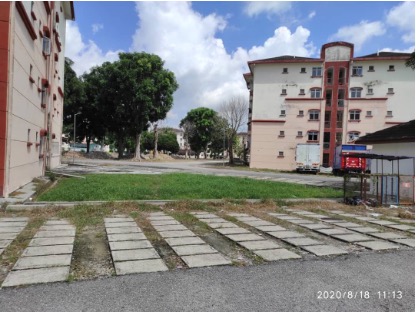
Designated location for motorbikes (Before) 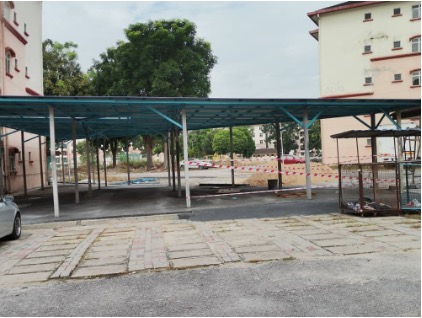
Covered motorbike parking bays (After)
Before 2020, only JMB committee were allowed to post comments on “Apartment M Owners WhatsApp Group”. No comments or feedback were allowed from strata unit owners. Therefore, it was only an announcement platform. The new JMB was of the opinion that this one-way communication counters the effort of the new JMB in collecting outstanding arrear maintenance charges from delinquent owners.
The new committee decided to make the “Apartment M Owners WhatsApp Group” open to all strata owners to post comments and suggestions. The improved communication increased owners’ participation and at the same time helped to recover some arrear maintenance charges.
By the end of 2020, the collection increased from 18% to 40%, as a result of the visible improvements implemented by the JMB and initiation of two-way communication between the JMB and owners. As for recalcitrant defaulters, the JMB intends to file a claim at the Strata Management Tribunal, and is hopeful that the collection of arrear maintenance charges will improve further.
This case study shows us how much of an impact a committed JMB committee can have on improving and restoring a soon-to-be abandoned property. We hope that the success story of “Apartment M” will give hope to other JMB/MCs out there – that you too can change the fate of your strata property.
Now, it is impossible to talk about JMB’s effectiveness without also mentioning the importance of owner participation in Annual General Meetings (AGM). In many properties, attendance of parcel/unit owners is as low as 5% to 10%. This is another reason why property management in many strata properties fail or are badly managed – the indifference of owners.
Having a higher rate of owner participation will ensure decisions made by the JMB are in the best interest of owners. This includes selecting a cohesive team of JMB/MC members with integrity, operational, technical, and creative problem-solving skills.
However, what happens if the JMB/MC failed in their responsibility?
Under Strata Management Act 2013, the strata property owners are also entitled to bring a claim against the JMB/MC concerning their performance or failure to perform. When all efforts to get JMB to perform fails, residents can file a case with the Strata Management Tribunal for arbitration to settle any disputes. (We previously wrote about Strata Condominium Disputes and How to Make a Claim at the Tribunal in Malaysia)
There isn’t a “one size fits all” solution. Cooperation is the first step in the right direction.
We wish all JMB/MC every success in managing their respective strata property on behalf of all strata unit owners. Should any JMB/MC need further advice you may contact us at 03-7785 1888. Like and follow us on our social media platforms for more content.

Sr. KC Law is a Registered Valuer, Estate Agent, and Property Manager with The Board of Valuers, Appraisers, Estate Agents, and Property Managers (BOVEAP) of Malaysia. KC Law is also an electronic engineer registered with the Board of Engineer Malaysia (BEM) and received his engineering training from Tunku Abdul Rahman College Malaysia and later at Hatfield Polytechnic United Kingdom. In the 1990’s he was involved with the digital transformation of Telecommunication infrastructure for Maxis and Telekom Malaysia. His passion for Real Estate in the 2000s led him to practice as a real estate negotiator in Ace Realty and later valuation and property management in Rahim & Co International. Several years later he founded Action Real Estate and Action Valuers & Property Consultants. His areas of expertise are in Real Estate Agency, Property Valuation, Property Management, and Business Valuation. He is a Member of The International Association of Certified Valuation Specialists of Canada, a Member of the Royal Institution of Surveyors Malaysia, a Member of the Malaysia Institute of Estate Agents, a Member of the Business Valuers Association of Malaysia, and a Member of the Malaysian Institute of Property and Facility Managers.

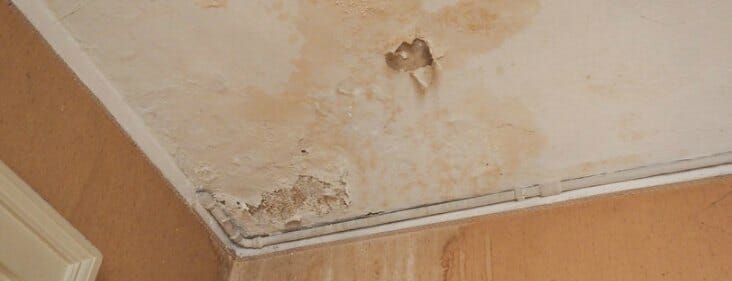


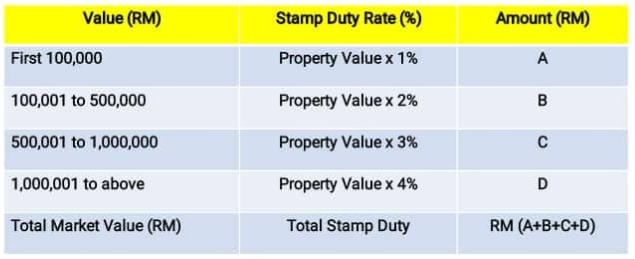
 Sr. KC Law is a Registered Valuer, Estate Agent and Property Manager with The Board of Valuers, Appraisers, Estate Agents and Property Managers (BOVEAP) of Malaysia. KC Law is also an electronic engineer registered with the Board of Engineer Malaysia (BEM) and received his engineering training from Tunku Abdul Rahman College Malaysia and later at Hatfield Polytechnic United Kingdom. In the 1990’s he was involved with the digital transformation of Telecommunication infrastructure for Maxis and Telekom Malaysia. His passion for Real Estate in the 2000s led him to practice as a real estate negotiator in Ace Realty and later valuation and property management in Rahim & Co International. Several years later he founded Action Real Estate and Action Valuers & Property Consultants. His areas of expertise are in Real Estate Agency, Property Valuation, Property Management and Business Valuation. He is Member of The International Association of Certified Valuation Specialists of Canada, Member of Royal Institution of Surveyors Malaysia, Member of Malaysia Institute of Estate Agents and Member of Business Valuers Association of Malaysia.
Sr. KC Law is a Registered Valuer, Estate Agent and Property Manager with The Board of Valuers, Appraisers, Estate Agents and Property Managers (BOVEAP) of Malaysia. KC Law is also an electronic engineer registered with the Board of Engineer Malaysia (BEM) and received his engineering training from Tunku Abdul Rahman College Malaysia and later at Hatfield Polytechnic United Kingdom. In the 1990’s he was involved with the digital transformation of Telecommunication infrastructure for Maxis and Telekom Malaysia. His passion for Real Estate in the 2000s led him to practice as a real estate negotiator in Ace Realty and later valuation and property management in Rahim & Co International. Several years later he founded Action Real Estate and Action Valuers & Property Consultants. His areas of expertise are in Real Estate Agency, Property Valuation, Property Management and Business Valuation. He is Member of The International Association of Certified Valuation Specialists of Canada, Member of Royal Institution of Surveyors Malaysia, Member of Malaysia Institute of Estate Agents and Member of Business Valuers Association of Malaysia.